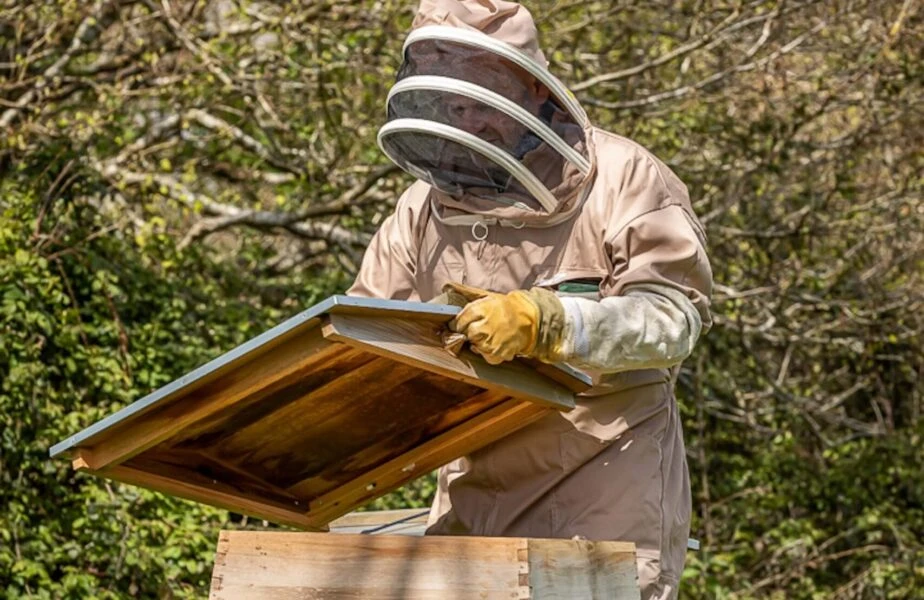Whatever their choice of home, our emphasis at Louma is to maintain the health of hives for the benefit of the bees, not for the benefit of humans. We record the growth or decline in bee numbers for each colony, note how much pollen they are collecting and observe their behaviour to ascertain their stress levels. Where possible, we look inside the hives to see how well the colony is doing. How are the brood cells? How are their food stores? Does the hive still have a queen? Then, if necessary, we help the colony. This could mean moving the colony to a better location or taking steps to maintain hive temperature. If there is a risk that not enough food is being stored, then we will consider feeding the colony.
The Importance of Pollinators
Bees are important pollinators, pollinating about 70% of global crops grown for human consumption, but around 90% of all plants worldwide depend on animal pollination to survive. The vast majority of this is carried out by flying insects. Installing bee hives and populating them with wild swarms of honey bees collected on site is a great way of boosting numbers, but honey bees and other bees (such as bumble bees), hoverflies, and butterflies are vital pollinators too.
Habitat loss and industrialised farming practices in the UK have resulted in a dramatic fall in wild pollinator numbers, meaning bees have never needed our help more. Because of this, the Louma team continually aim to make our land more attractive to bees, sowing wildflower meadows and planting hundreds of flowering trees. These plants provide the nectar and pollen bees need to eat, feed to their brood, and, in the case of honey bees, lock up in stores to keep them going over the winter months. In return, the bees transfer pollen from flower to flower enabling the sexual reproduction flowering plants need to bring about the next generation. This reciprocal arrangement is essential for both flower and insect: a world without pollinators means a world without flowers, and vice versa.
When it comes to honey bees, there is a range of approaches a beekeeper can take. One end of the spectrum is to think of bees as livestock which produce a usable product (honey and beeswax). In this approach, every measure is taken to increase honey production. This could result in bee populations being at greater risk of disease and parasites, outside of the relatively artificial environment of the bee hive and its attendant interventions from the beekeeper. The other end of the spectrum is natural beekeeping, which prioritises the interests of the bees, encouraging them to thrive for their own sake. Our bee team takes this approach, intervening only to encourage hives to thrive and so increasing the chances that more wild colonies will be established.
At Louma, we offer an opportunity to observe these extraordinary creatures’ behaviour, learn about their life-cycles, or else simply enjoy the natural habitats that encourage their survival.
By Chris Denne
